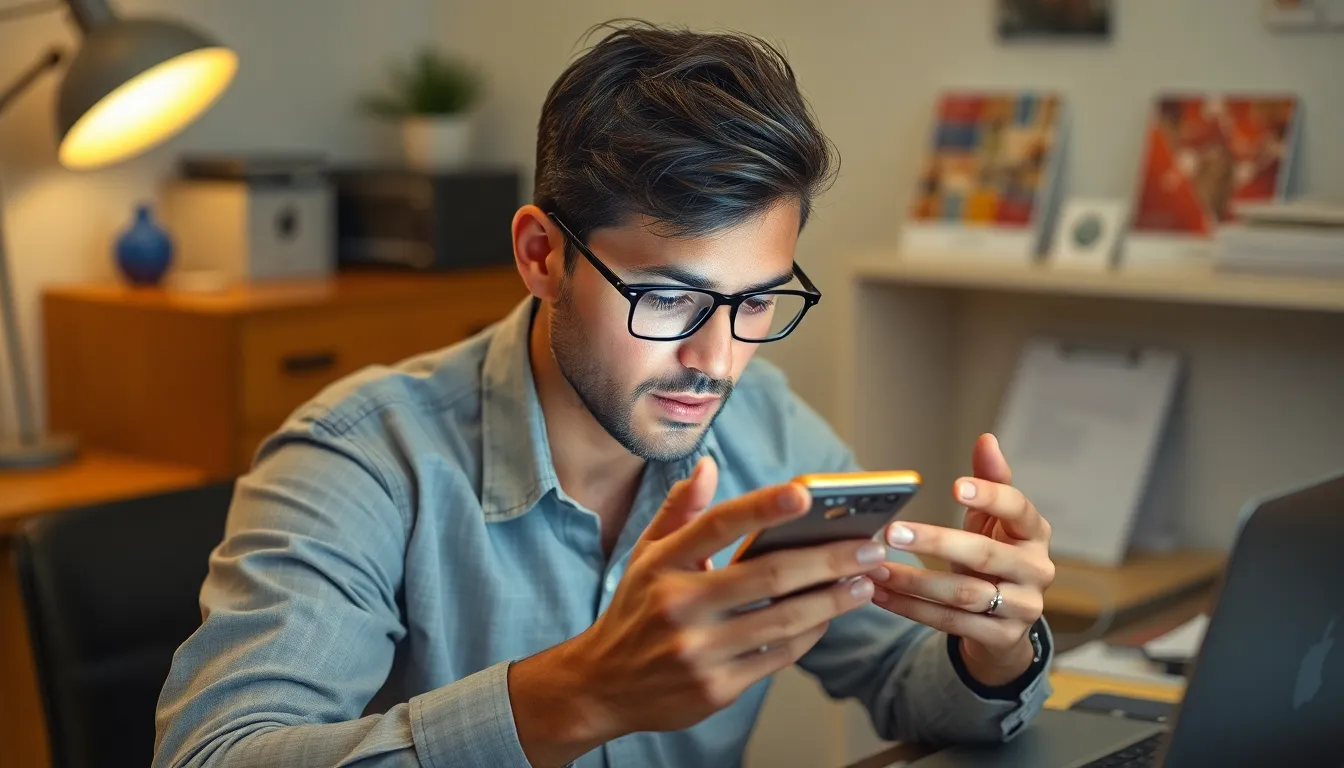Table of Contents
ToggleIn a world where smartphones reign supreme, the last thing anyone wants is to discover that their trusty iPhone has been compromised. Imagine the horror of scrolling through your photos only to find that your cat’s latest antics have been replaced by suspicious selfies. If you’ve ever wondered whether your device has fallen into the clutches of a digital villain, you’re not alone.
Signs Your iPhone May Be Hacked
Identifying signs of a hacked iPhone is essential for maintaining security. Several key indicators can signal a security breach.
Unusual Battery Drain
Unusual battery drain often suggests unauthorized access. Rapid depletion of battery life can indicate that apps are running in the background without user consent. Users might notice significant drops even with minimal usage. Frequent charging can become necessary, disrupting daily routines. Investigating battery usage in settings can reveal apps consuming excessive energy. If unknown apps appear or familiar ones show unusual activity, immediate attention is warranted.
Strange App Behavior
Strange app behavior raises red flags regarding device integrity. Apps may crash unexpectedly or display features not present before. Users often experience unrequested pop-ups or advertisements, signaling potential malware. Applications might also send messages autonomously, leading to confusion. Anomalies like altered settings can indicate external manipulation. Checking for unfamiliar apps can help identify unauthorized installations. If a user finds changes to app permissions, it indicates possible compromise.
Unrecognized Accounts and Devices
Unrecognized accounts and devices point to potential security flaws. Users should frequently monitor their account settings for unfamiliar logins. Detection of new devices linked to their Apple ID can indicate unauthorized access. Notifications about login attempts from unusual locations should raise immediate concern. Reviewing connected devices within Apple ID settings provides clarity on account security. Any strange behavior can signify that someone else may access personal information. Timely action in changing passwords can help secure the account.
Checking for Suspicious Activity

Monitoring your iPhone for unusual behavior can reveal potential hacking. Users should examine specific areas closely.
Review Installed Apps
Checking installed apps is essential for uncovering security issues. Users need to look for unfamiliar applications that they didn’t download. Any apps with strange names or functions warrant further investigation. Deleting suspicious apps can help prevent unauthorized access. Regularly updating the device ensures you have the latest security patches. Additionally, reviewing app permissions can reveal apps with excessive access to personal data.
Analyze Data Usage
Data usage trends provide insights into possible hacking. Users should access their iPhone settings to review cellular data usage. Anomalies in data consumption often indicate unauthorized activity. Sudden spikes in data usage can suggest that a malicious app is running in the background. Monitoring data for individual applications helps identify those using excess data unexpectedly. Tracking usage patterns regularly allows users to maintain better control over their device’s security.
Security Measures to Take
Taking immediate security measures is essential after suspecting an iPhone hack. Prompt action helps protect personal information and prevent further unauthorized access.
Change Your Passwords
Start by changing passwords for all accounts linked to the iPhone. Prioritize using strong, unique passwords for each account, as this reduces vulnerability. Use a mix of letters, numbers, and symbols to enhance strength. Consider employing a password manager to keep track of secure passwords. Changing passwords regularly adds an extra layer of protection. After updating, log out of all devices to ensure that previous sessions are ended. Additionally, inform contacts of potential security issues to mitigate risks associated with any compromised accounts.
Enable Two-Factor Authentication
Activating two-factor authentication (2FA) enhances security significantly. This extra layer requires users to provide a second form of verification beyond their password, establishing a stronger defense against unauthorized access. Enable 2FA on essential accounts like email and banking for maximum security. Rely on authentication apps or text messages as secondary verification methods. After activation, review the security settings to confirm that everything functions correctly. Staying vigilant with 2FA mitigation keeps accounts secure even if passwords are compromised.
Preventing Future Hacks
Taking proactive steps ensures better protection against future hacks of an iPhone. Maintaining vigilance and implementing effective security measures goes a long way in safeguarding personal information.
Keep iOS Updated
Updating iOS regularly is crucial. Apple frequently releases updates that address security vulnerabilities. Ignoring these updates may expose the device to potential threats. Users should enable automatic updates to streamline this process. Each new version enhances overall security and fixes known issues. Rotate the device’s settings to check for updates if automatic downloads aren’t enabled.
Be Wary of Public Wi-Fi
Using public Wi-Fi networks poses significant risks to device security. Cybercriminals often exploit public networks to intercept data. Connecting to a secure, private network is always preferable. Utilizing a Virtual Private Network (VPN) provides an extra layer of security while accessing shared networks. If public Wi-Fi is unavoidable, avoid logging into sensitive accounts. By being cautious with connections, users can reduce the chances of unauthorized access.
Recognizing the signs of a hacked iPhone is essential for protecting personal information. Users need to stay vigilant and regularly monitor their devices for unusual activity. By taking proactive measures such as updating passwords and enabling two-factor authentication, they can significantly enhance their security.
Staying informed about the latest security practices and avoiding risky behaviors like using public Wi-Fi can further safeguard their devices. It’s crucial to act quickly if any suspicious signs surface to minimize potential damage. Ultimately, a proactive approach to digital security can help users maintain control over their iPhones and personal data.







